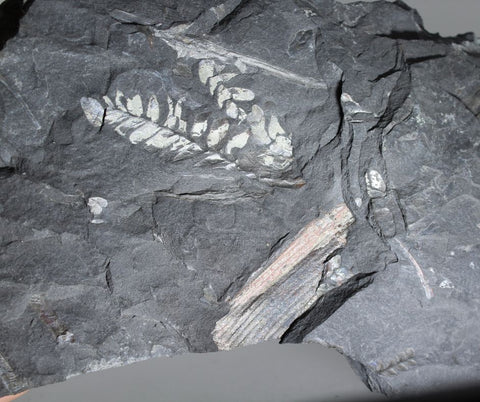Introduction
The Carboniferous period spans from 358 to 298 million years ago. This important geologic time saw the rise of amphibians, early reptiles, expanding forests, and the assembly of the supercontinent Pangaea. But some of the most crucial developments were happening in the plant world. Carboniferous plants paved the way for dinosaurs and mammals while producing fascinating fossils that reveal hidden stories from Earth's past.

The Changing Plant Life
During the Carboniferous, lush tropical forests blanketed the landscapes. Abundant plants pull carbon dioxide from the air, releasing oxygen in the process. Oxygen levels soared to over 30%, compared to just 21% today. This allowed insects and amphibians to grow to giant sizes.
The roots of Carboniferous plants also accelerated the development of soils. Their stems and bark enabled the evolution of wood-burrowing insects. The vast amounts of plant debris and fallen logs set the stage for coal formation that would power the Industrial Revolution.
Many of the plants dominating Carboniferous forests were early seed ferns, clubmosses, and horsetails that towered over 90 feet tall. But the period also saw the first appearance of conifers, an ancient predecessor to pine trees. By the end of the period, conifers and seed ferns anchored sprawling forests across the continents.
Fossilization Secrets
Carboniferous plants hold remarkable secrets revealed through fossilization. Fossils preserve anatomical details of stems, roots, leaves, cones, and bark. This shows how plant groups diversified and spread. Clear impressions in rocks let paleobotanists study external features. While permineralization preserves 3D internal plant structures when silica infiltrates cell walls.
Coal itself is a fossil derived from huge quantities of Carboniferous plant matter. It forms from the buildup of dead plants in swamps. Their decaying remains turn into peat, which transforms into coal when buried deeply. Much of the world's coal originated 300 million years ago from Carboniferous forest remnants. Thus, the fossil fuels powering modern society are a direct legacy of ancient plants.
Fascinating plant fossils have also been found encased in amber dating to the Carboniferous. Amber forms from the resin of conifer trees. Resin flowed down trunks and trapped bits of plant debris, perfectly preserving them for millions of years before hardening into gem-like amber deposits. The oldest amber fossils contain fragments of moss and fern. This provides a snapshot of the forest ecosystems that those plants inhabited long ago.
Key Plant Fossil Sites
Some of the most important Carboniferous plant fossils come from sites in Scotland, England, France, and North America, which were located near the equator millions of years ago. The sites showcase stunning diversity and detail.
The Rhynie Chert beds in Scotland contain some of the world's oldest anatomically preserved land plants from 407 million years ago. Petrified forests discovered at Pompeii in France and Cairo, Illinois, exhibit tree stumps up to 10 feet wide that now resemble stone columns.
Mazon Creek fossils in Illinois include plant species and animals spectacularly preserved in ironstone concretions. These unique nodules formed around dead plant matter and organisms, encasing them completely to retain fine features. The concretions split open like geodes to reveal exquisitely preserved ferns, seed pods, leaves, and even jellyfish.
Other noteworthy sites contain fossilized roots, shrubs, tree trunks, and complete fronds that provide detailed looks at Carboniferous flora. These include the Joggins Fossil Cliffs in Nova Scotia, the La Magdalena coal mines in Spain, and the Brymbo Fossil Forest in Wales. The range of localities demonstrates how far Carboniferous plant communities spread.
Reconstructing Plant Communities
Individual fossils offer glimpses into the plants that existed millions of years ago. However, combining multiple fossils allows paleontologists to recreate entire primordial plant communities. For example, collections from the Upper Carboniferous in England contain over 100 plant species, including ferns, conifers, and 15-foot-tall horsetails. This reveals highly diverse tropical rainforests with complex ecosystems.
Fossil discoveries can even preserve plant interactions. Compressions of leaves show signs of insect herbivory, like holes and chew marks. Petrified tree trunks display scars left by parasitic fungi. And amber encapsulates fungus-infected plant materials. These provide concrete evidence of plant diseases in the past.
Plant Legacy
The plants of the Carboniferous set the stage for the rise of dinosaurs, mammals, and flowering plants. Their extensive root systems enriched soils. Decomposing plant debris led to coal that powered industry. Amber resins captured ancient plant ecosystems. And fossils fueled discoveries about plant evolution.
Carboniferous plants also directly impact animals. Increasing oxygen from forests allowed insects and amphibians to thrive. Conifers became the prime habitat as they diversified into forests. And dinosaurs evolved to feed on abundant seed ferns and other vegetation.
Conclusion
The legacy of Carboniferous plants remains with us today in the fossils they left behind. These provide profound insights into the primordial forests that shaped land habitats and the path of evolution. For any fossil collector, Carboniferous plant specimens are captivating windows into the formative chapter of life's history when plants began to transform Earth's landscapes.
Discover Amazing Prehistoric Treasures at Fossil Age Minerals
For those looking to add exquisite Carboniferous plant fossils or other rare finds to their personal collection, Fossil Age Minerals has an amazing selection of museum-quality specimens. Our collection also includes fascinating animal fossils like one of the most complete dinosaur fossil, as well as one of the oldest amber fossil, dated over millions of years old. Every fossil is guaranteed authentic and comes with a certificate of origin. Our website offers worldwide shipping and guarantees the authenticity of every fossil. Explore our website and unearth your own piece of pre-history.


